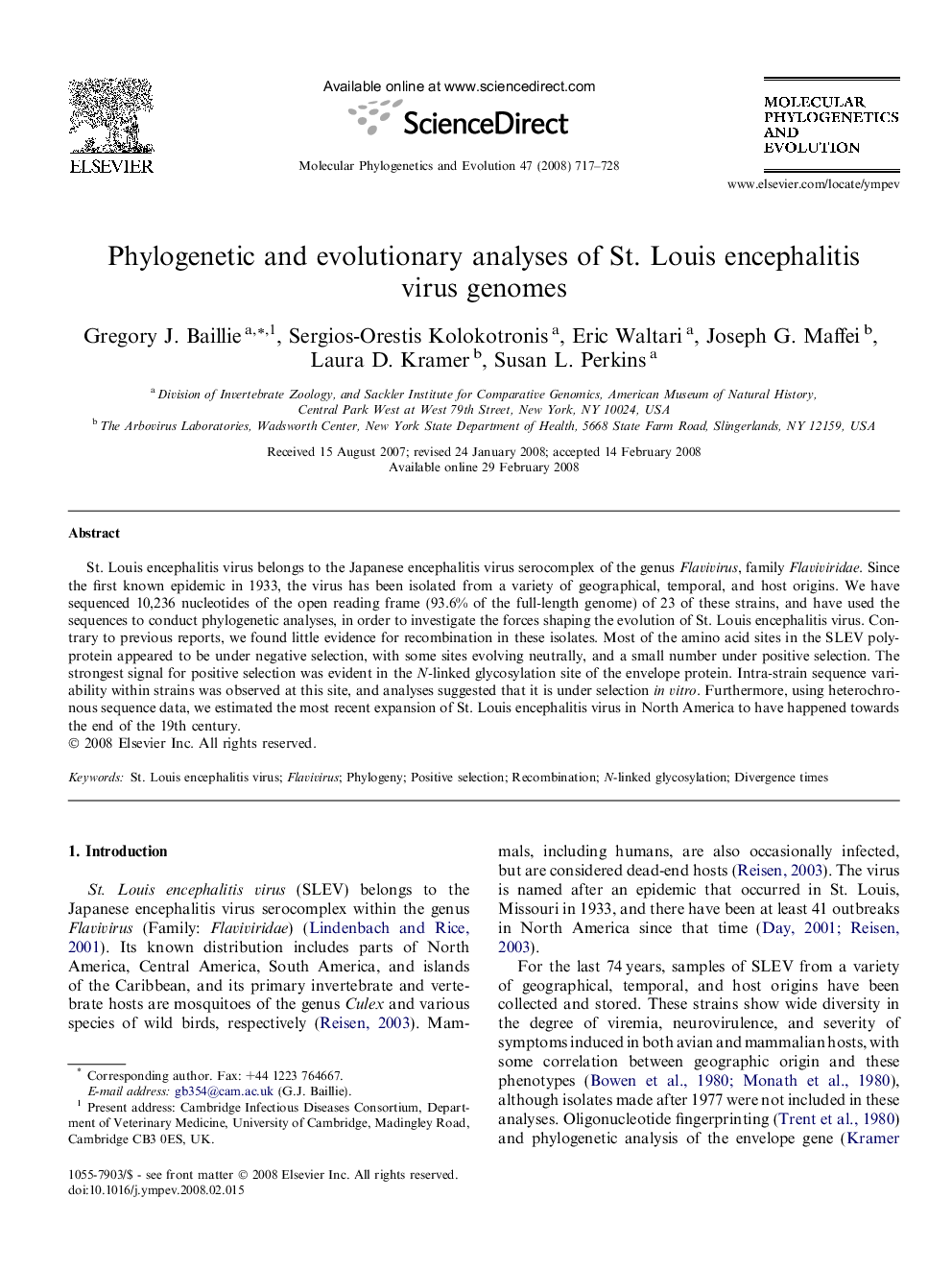| Article ID | Journal | Published Year | Pages | File Type |
|---|---|---|---|---|
| 2835372 | Molecular Phylogenetics and Evolution | 2008 | 12 Pages |
St. Louis encephalitis virus belongs to the Japanese encephalitis virus serocomplex of the genus Flavivirus, family Flaviviridae. Since the first known epidemic in 1933, the virus has been isolated from a variety of geographical, temporal, and host origins. We have sequenced 10,236 nucleotides of the open reading frame (93.6% of the full-length genome) of 23 of these strains, and have used the sequences to conduct phylogenetic analyses, in order to investigate the forces shaping the evolution of St. Louis encephalitis virus. Contrary to previous reports, we found little evidence for recombination in these isolates. Most of the amino acid sites in the SLEV polyprotein appeared to be under negative selection, with some sites evolving neutrally, and a small number under positive selection. The strongest signal for positive selection was evident in the N-linked glycosylation site of the envelope protein. Intra-strain sequence variability within strains was observed at this site, and analyses suggested that it is under selection in vitro. Furthermore, using heterochronous sequence data, we estimated the most recent expansion of St. Louis encephalitis virus in North America to have happened towards the end of the 19th century.
